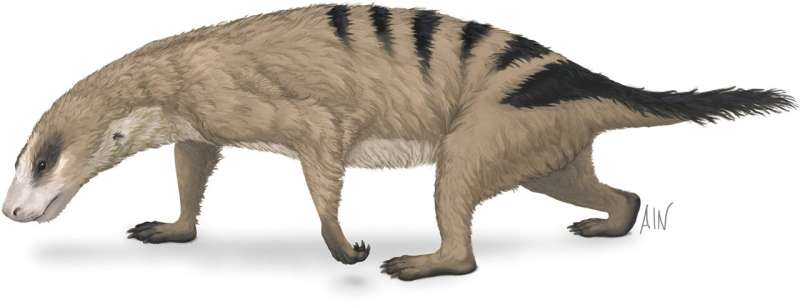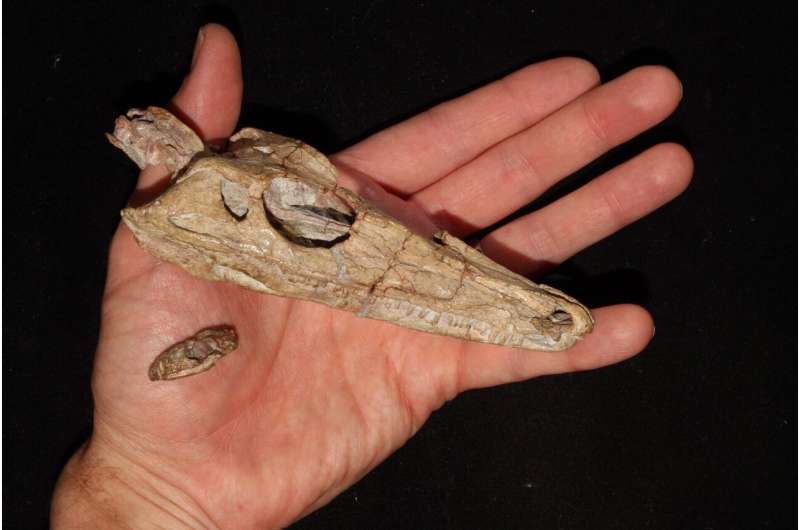This article has been reviewed according to Science X's editorial process and policies. Editors have highlighted the following attributes while ensuring the content's credibility:
fact-checked
peer-reviewed publication
trusted source
proofread
Survival of the newest: The mammals that survive mass extinctions aren't as 'boring' as scientists thought

When an asteroid hit the Earth 66 million years ago, it set off a devastating mass extinction. The dinosaurs (except for a few birds) all died out, along with lots of the mammals. But some small mammals survived, laying the groundwork for all the mammals alive today.
For decades, scientists have assumed that mammals and their relatives that survived challenging times (like those during mass extinctions) made it because they were generalists that were able to eat just about anything and adapt to whatever life threw at them.
A new study into the mammal family tree through multiple mass extinctions revealed that the species that survived aren't as generic as scientists had thought: instead, having new and different traits can be the key to succeeding in the aftermath of a catastrophe.
"The idea of the 'survival of the unspecialized' goes back to the 1800s, and the conventional wisdom is that generalized animals are the least likely to go extinct. But we found that the ones that survived more often only seemed generalized in hindsight, when compared with their later descendants. They were actually pretty advanced animals for their time, with new traits that might have helped them survive and provided evolutionary flexibility," says Ken Angielczyk, the MacArthur Curator of Paleomammalogy at the Field Museum and senior author of the study in Nature Ecology & Evolution.
"What's been thought previously is that every time a new group of mammals evolves, you start out with a small generalist animal, since when disaster strikes, those are the guys that keep on trucking—they can hide anywhere, they can eat whatever is around," says Spencer Hellert, an Assistant Professor at Columbia College Chicago, a research associate at the Field Museum, and co-lead author of the study. "The kind of mammal that survives a mass extinction won't be a specialist like a panda bear that can only eat bamboo."
David Grossnickle, an Assistant Professor at the Oregon Institute of Technology and co-lead author, published a study in 2019 that highlighted how small, insect-eating mammals are often the lineages that survive challenging times, including the extinction event that killed the dinosaurs, and serve as forerunners of major diversifications. He approached Hellert and Angielczyk to see if that trend held true for earlier mammals and their ancestors.
Hellert created a massive family tree of the synapsids, the group of animals of which mammals are the last surviving members. This family tree is one of the largest fossil trees ever produced, and it takes into account all the previous family trees made by scientists for this group. This method is a more formal, rigorous, and repeatable way to summarize information from lots of trees instead of just picking a few and sticking them together.
"We couldn't test this idea without a humongous family tree," says Angielczyk, "along with general information about the animals' diets and body sizes. Then we looked at what happened over time through the five major evolutionary radiations in synapsids," when a few species branched out into greater diversity. When a new disaster led the majority of those species to go extinct, the process repeated itself.

The researchers, including co-authors Graeme Lloyd and Christian Kammerer, found that the story of synapsid evolution wasn't one of "survival of the small and unspecialized." At some points, larger synapsids were the ones that survived, and the winners weren't just generalist insect-eaters.
"We were pretty surprised—it's pretty well-established that those mammal radiations go from these small insectivores into the bigger taxa repeatedly, so I was kind of expecting to see that as we went back into synapsid history. And when we went back, that pattern starts to disappear," says Grossnickle.
While some of the survivors of mass extinctions at first appeared to be unspecialized, closer analysis revealed that they had newer, more novel characteristics. For instance, many mammals from the time of the dinosaurs had teeth that were good for cutting into prey. A few had tooth structures that acted like a mortar and pestle and were able to grind in addition to just cutting. This "fancier" tooth may have been an advantage in hard times with less food availability, because this more specialized tooth structure would have let them eat a wider variety of food.
These findings don't mean that hyper-specialized animals, like pandas that only eat bamboo, are less vulnerable to the threat of extinction than more generalist species, like raccoons that can eat a wider variety of foods. Instead, the study shows that the mammal relatives that made it through mass extinctions aren't as generic as previously assumed.
"Animals with novel traits like new tooth features, or jaws that work a little better at breaking down different food items, don't really take over ecologically until the incumbent, older lineages go extinct," says Grossnickle. "You often need an extinction event like the one that killed the dinosaurs to knock out some of those older groups, and then it allows those fancier animals to persist and diversify."
The researchers say that the results of their study have broader implications for scientists' understanding of how evolution works. "We don't really know if there is a consistent set of features typically possessed by the ancestors of evolutionary diversifications," says Angielczyk.
"The fact that we see this complexity in the diversifications of mammals and their ancient relatives means we need to examine other groups to see if the situation in mammals is an exception, or business as usual."
More information: Derived faunivores are the forerunners of major synapsid radiations, Nature Ecology & Evolution (2023). DOI: 10.1038/s41559-023-02200-y
Journal information: Nature Ecology & Evolution
Provided by Field Museum





















